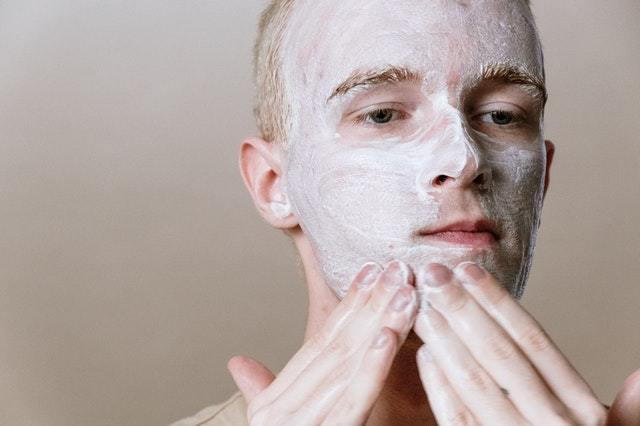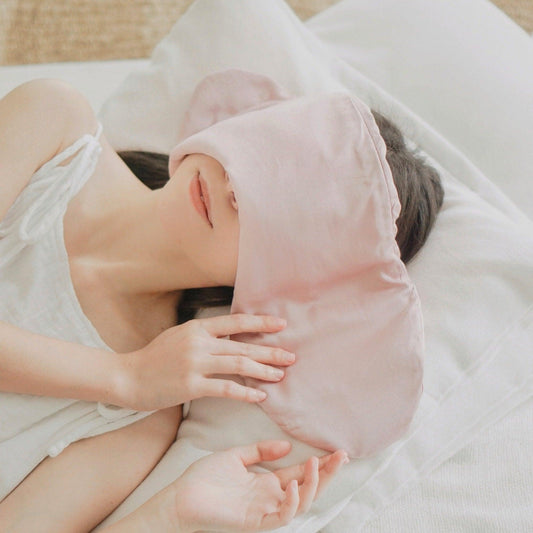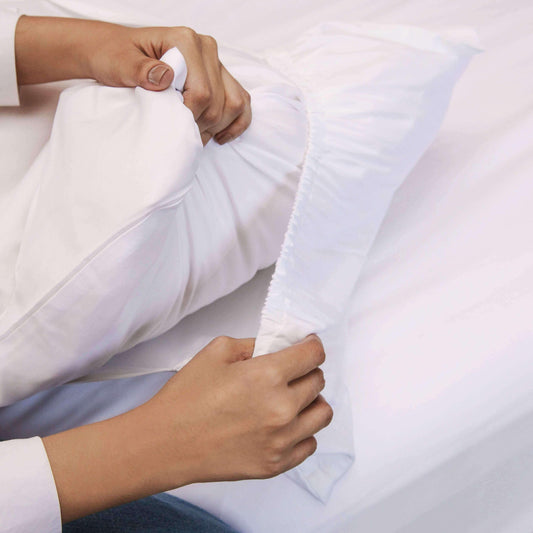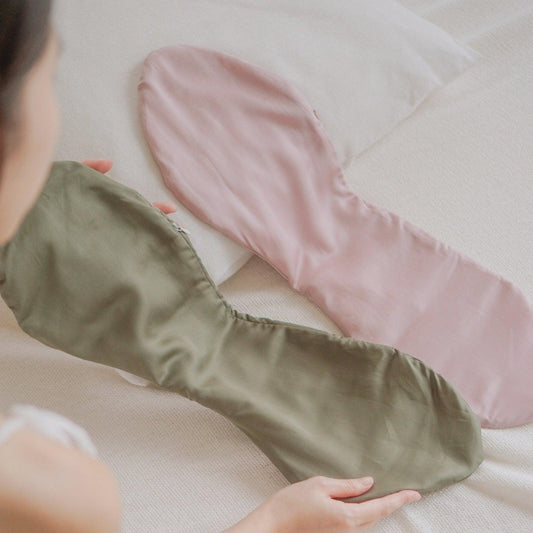
Is Your Pillowcase Causing Your Acne?
Share
Have you ever woke up with less than perfect skin? Your pillowcase may be to blame! Pillowcases harbour dirt and oil and then come in to direct contact with your face for an extended period of time. This allows the dirt time to clog your pores, which can cause spots, or in some cases acne. Acne mechanica refers to acne caused by material touching your skin.
Use this checklist to find out whether your pillow is causing your skin issue:
1. Do you remove your make-up before bed?
Not removing your make-up before bed is one of the worst beauty sins you can commit! Old make-up and grime will clog your pores, leading to spots or blackheads, or in some cases, even acne. Use a gentle, fragrance-free make-up remover, which won’t irritate your skin.
2. Do you have an evening skin routine?
Using a cleanser or face wash each evening will limit the amount of dirt which then gets transferred back on to your pillow (which will eventually be transferred back on to your face!). Choose a cleanser which is suitable for your skin type. There are many formulas available designed specifically for acne sufferers. Moisturize with a lightweight, hydrating cream.
3. How often do you wash your pillowcases?
Washing pillowcases is essential for good sleep, hood hygiene and good health. Pillowcases can harbour dead skin, dust, hair, mites, oils and dirt. This is transferred to your skin during the night, leading to spots or acne mechanica.
Traditional advice tells us that bedding should be washed once a week. We recommend washing your pillowcases more often than that, especially if you have skin concerns. Washing them every 2-3 days will limit the amount of dirt and oil they retain. Make sure you have at least 2 sets of bedding so you have spare. The pillows themselves should be washed once a month.
Avoid using fabric softener as this can leave a waxy residue, which could clog your pores. Use non-bio, fragrance-free detergent if you have sensitive skin. Avoid any harsh chemicals which can cause irritation. Make sure you wash pillowcases and other linen on a high temperature, to ensure any bacteria is killed.
4. What material are your pillowcases?
Your pillows should be made of a natural material, such as bamboo fibres. Natural materials are more breathable in comparison to synthetic pillowcases and are less likely to transfer oil to your skin.
If you are using a medicated product for your acne, the likelihood is you will apply it at night, and some deposits will end up on your pillow. White pillowcases are recommended as some acne treatments can discolour fabrics. White pillowcases will also show dirt more quickly, reminding you to wash and change them more often!
Softer materials such as silk and bamboo are kinder on our skin and hair. The smooth material reduces the amount of friction against our face. This is said to result in a reduction in frizzy hair, fresher looking skin and even fewer wrinkles!
Traditional pillowcase materials, such as cotton, can draw moisture out of the face. This can cause dryness and/or irritation. Bamboo fibre pillowcases are much better for retaining the skins natural oils.
Chose hypoallergenic fabrics, as they are more gentle on your skin, and less likely to cause a reaction. Silk and bamboo are good choices.
Bamboo pillowcases are naturally antimicrobial. This means they will kill off bacteria which could lead to acne.
Avoid synthetic fabrics as they have poor temperature regulation. A natural fibre pillowcase, such as the Sleepfolio pillow sleeve, will stay cool in summer and retain heat in winter. This will help you avoid excess sweating at night, which can clog pores and lead to spots. Heat stimulates oil production- bad news for those of us with oily skin! Keep your bedroom as cool as possible.
The Sleepfolio pillow sleeve is the ideal pillowcase choice for those suffering from skin issues such as acne.
5. How long have you had your pillowcases?
Old pillowcases harbour dirt and germs which are then transferred to your face. This can potentially cause acne. Buy a new, high-quality pillowcase every year and choose one with natural fibres.
6. Did you get a good night’s sleep?
Sleep is essential for good health and wellbeing. A lack of good quality sleep can play havoc with our skin, in some cases resulting in dry patches or acne. Sleep is when our skin renews and replenishes itself, so a good nights rest is essential for great-looking, healthy skin.
Not everyone will develop acne from a dirty or unsuitable pillowcase, as we all react differently to different materials. Stress, genetics and hormones all play a large role in acne and our skin health. However, your pillowcase can worsen breakouts for those prone to spots.
A dirty or poor quality pillowcase can also exasperate other skin conditions such as eczema. Following the steps laid out in the checklist above will minimise your risk of a breakout, and ensure a great night’s sleep!




